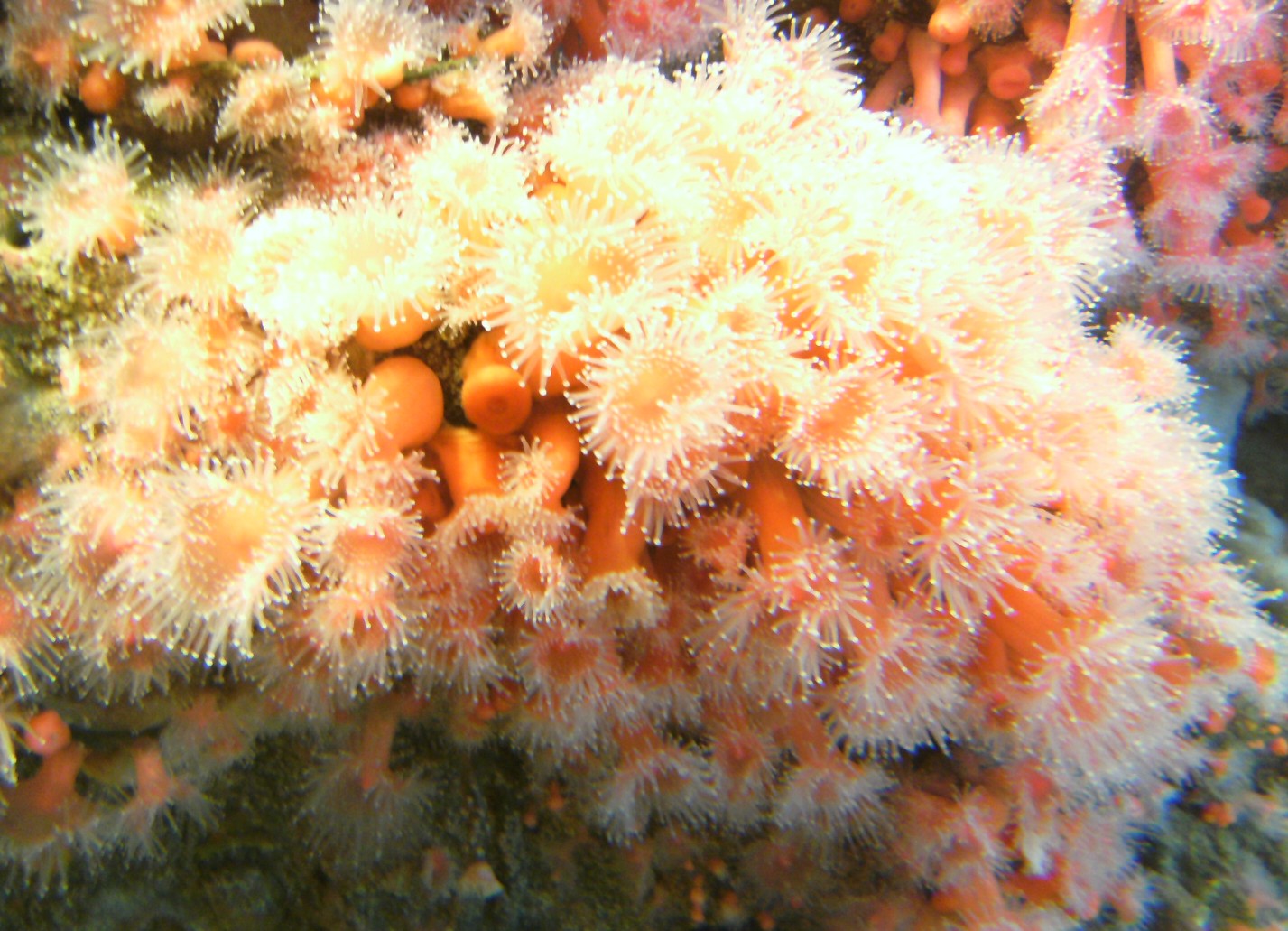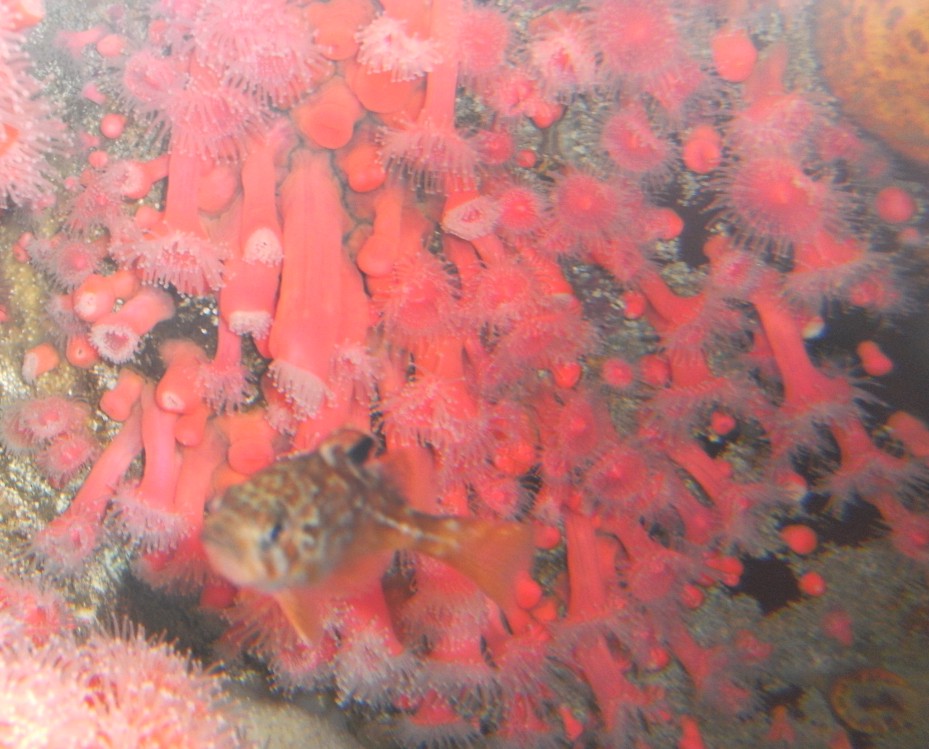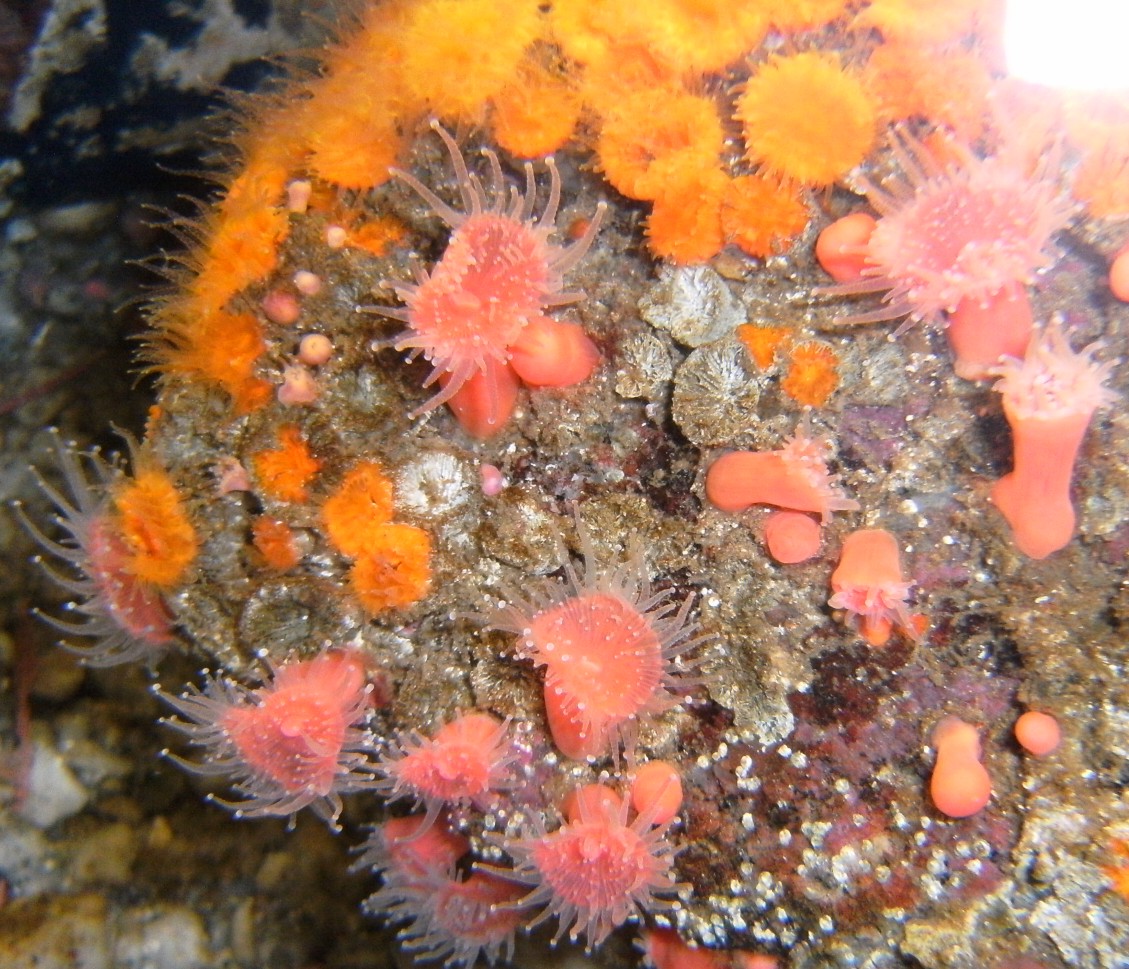Corynactis californica Carlgren, 1936Common name(s): Strawberry anemone, California club-ray |
|
| Synonyms: |  |
| Phylum Cnidaria
Class Anthozoa Subclass Zoantharia Order Corallimorpha Family Corallimorphidae |
|
| A cluster of Corynactis californica at the Monterey Bay Aquarium, CA. Polyps are 1 to 1.5 cm diameter. | |
| Photo by: Dave Cowles, August 2010 | |
How to Distinguish from Similar Species: There are no other anemone-like species in our area with club-tipped tentacles. The orange cup coral Balanophyllia elegans is of similar size and often similar color (photo) but has a hard skeleton and does not have club-tipped tentacles.
Geographical Range: This species is said to be common in some areas of southern California but I have not often encountered it. It occurs from British Columbia to San Martin Island, Baja California but is rarely found intertidally north of California.
Depth Range: Intertidal to 30 m
Habitat: Rocky shores (under rock ledges), concrete wharf pilings, plastic foam floats. Especially where there are strong currents.
Biology/Natural
History: The knobbed
tentacles
contain
very large cnidae,
easy to view under the microscope. Undischarged cnidae
have osmotic pressures up to 140 atmospheres. Has been
observed in
the lab to defend against attack by Anthopleura
elegantissima by extending its cnidae-rich
mesenteries
through the mouth. This species reproduces asexually by
longitudinal
fission. Clones are all the same color. Feeds on
copepods,
nauplius larvae, and other small animals.
| Return to: | |||
| Main Page | Alphabetic Index | Systematic Index | Glossary |
References:
Dichotomous Keys:
Kozloff,
1987
Smith and Carlton, 1975
General References:
Barnes,
1980
Gotshall
and Laurent, 1979
Kozloff,
1993
Morris
et al., 1980
Scientific
Articles:
General Notes and Observations: Locations, abundances, unusual behaviors, etc.:

Since they do not have a solid skeleton as does Balanophyllia
elegans, the polyps can stretch out quite tall, as
seen in this
photo. Taken at Monterey Bay Aquarium by Dave Cowles, August
2010.

These individuals from the Monterey Bay Aquarium show another color
variation--strongly white tentacles.

This view shows Corynactis californica in front and
the orange
cup coral Balanophyllia
elegans in the back, to show their similarities and
differences.
Note the empty skeletons of Balanophyllia
elegans encrusting the rock. Photo at
Monterey Bay Aquarium
by Dave Cowles, August 2010.
Authors and Editors of Page:
Dave Cowles (2002): Created original page
Edited by Dave Cowles, 2005